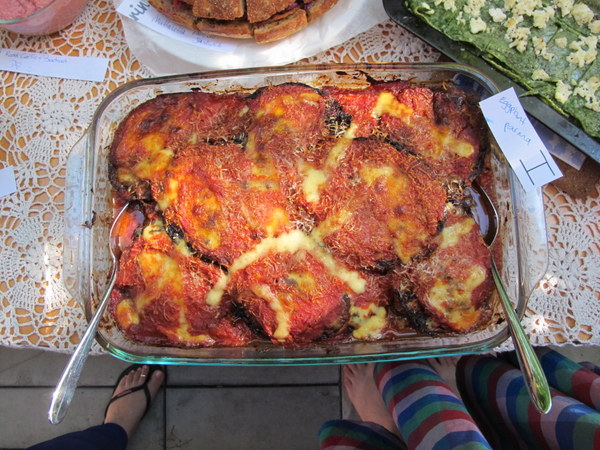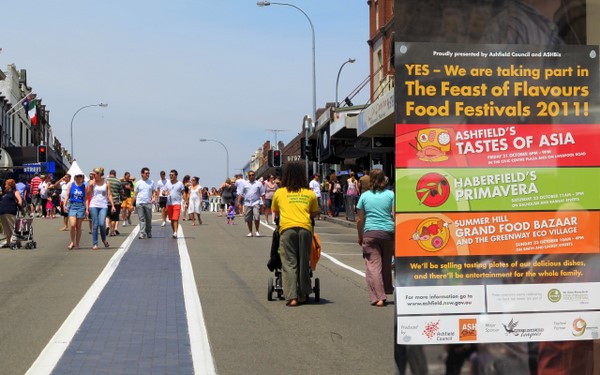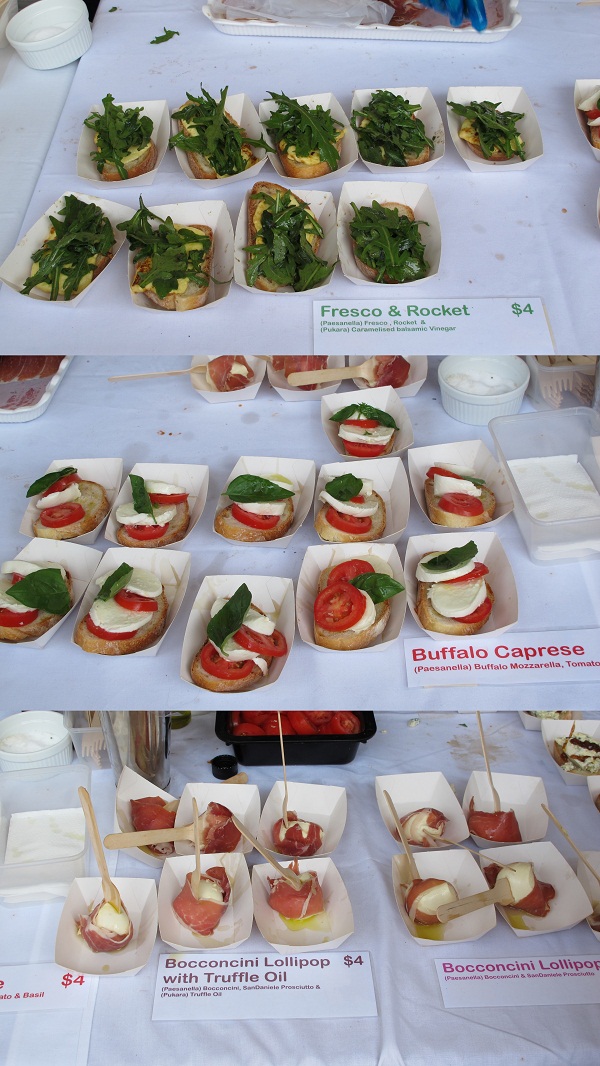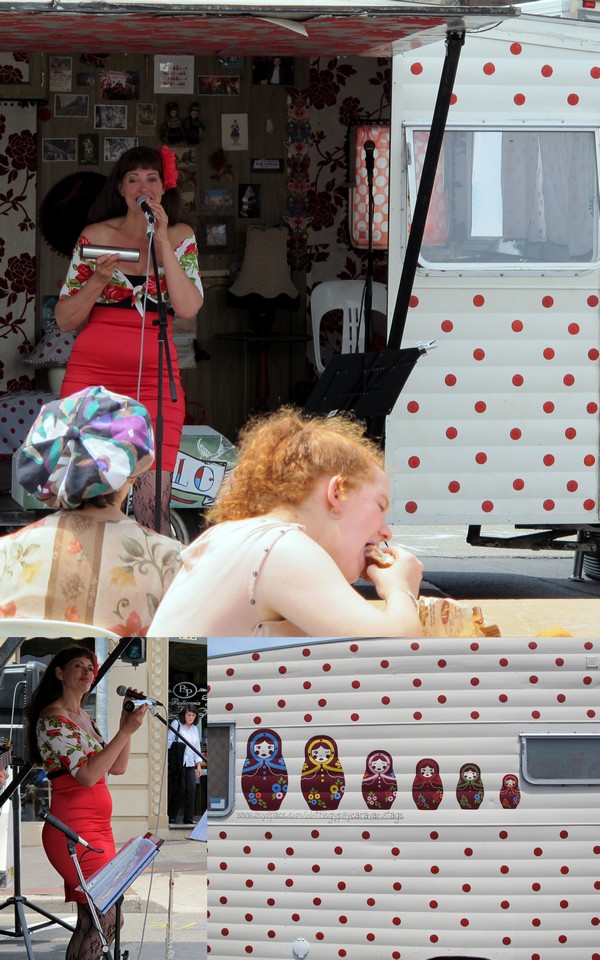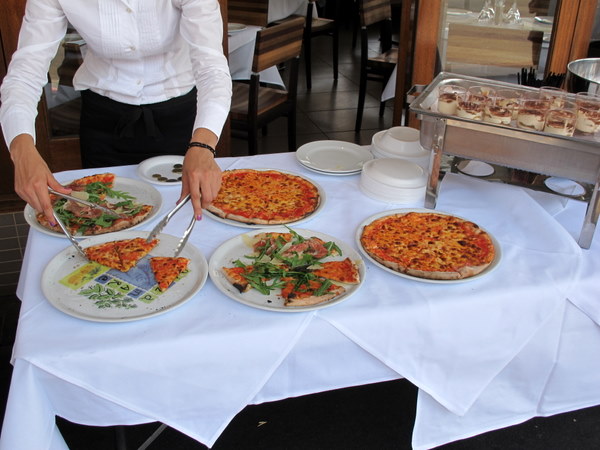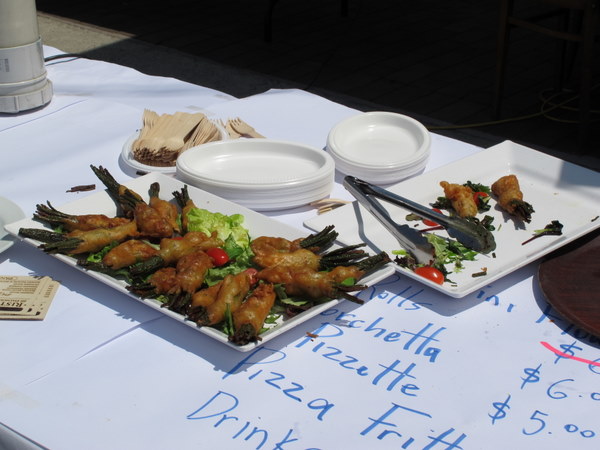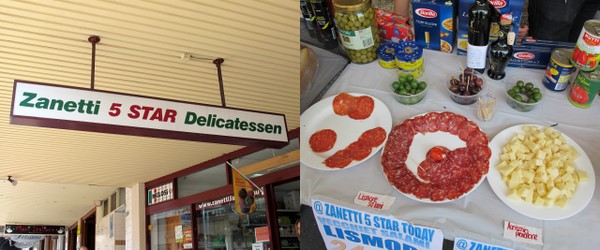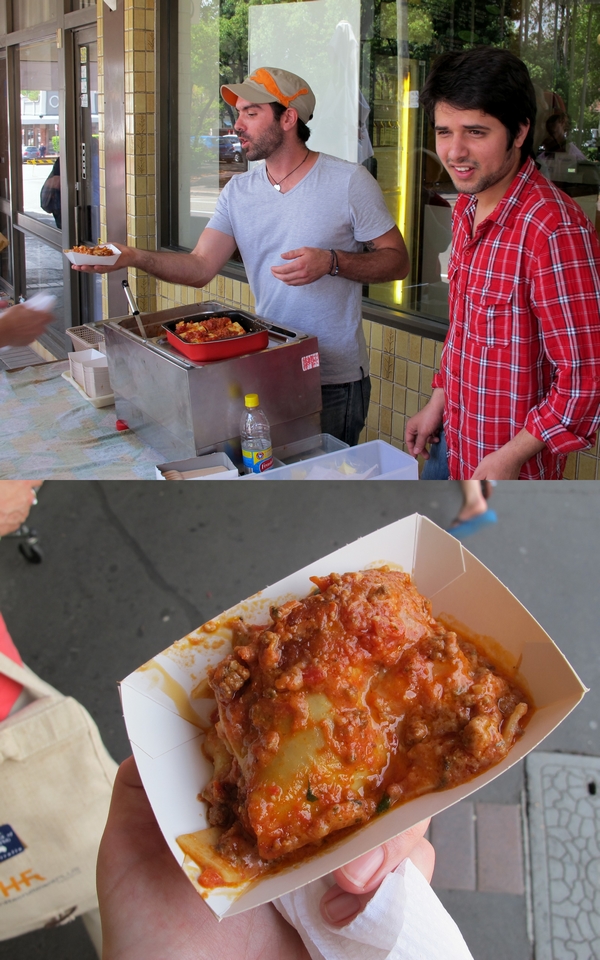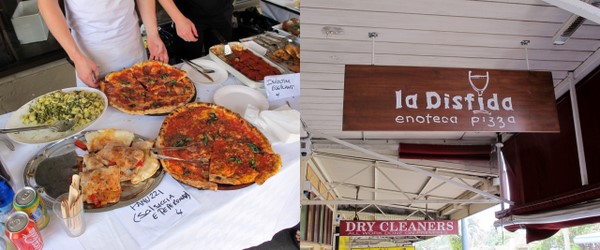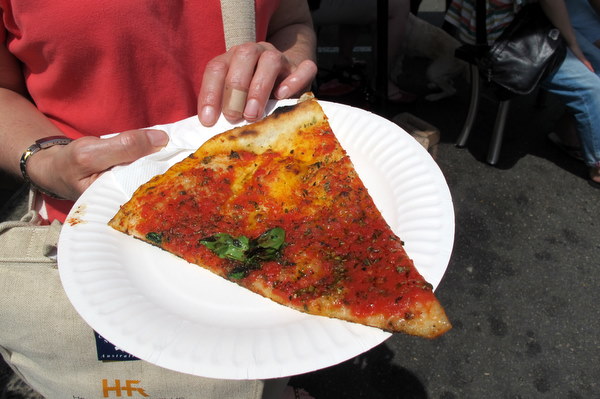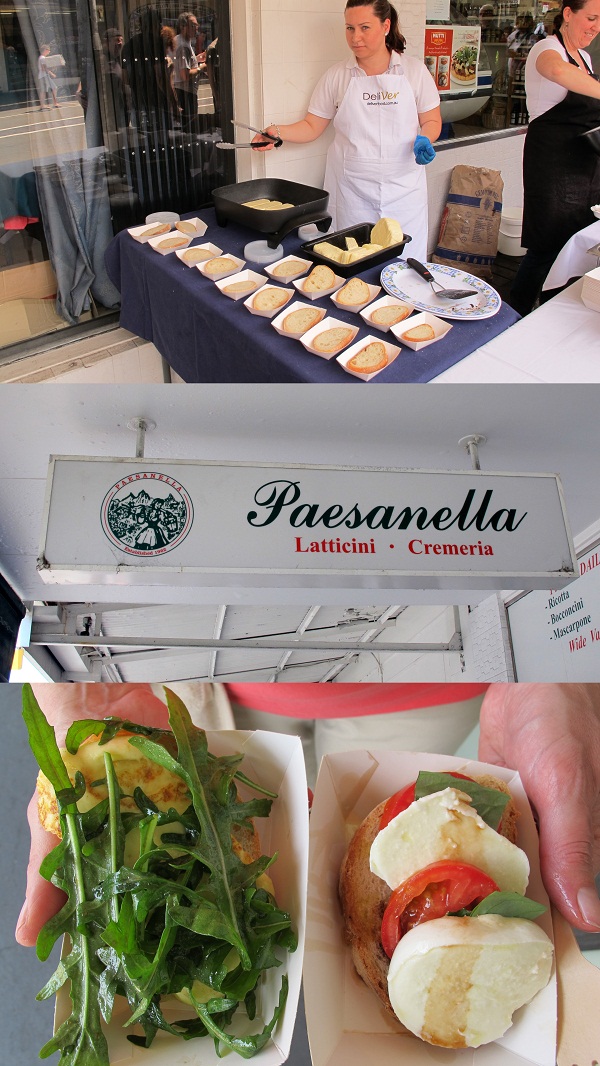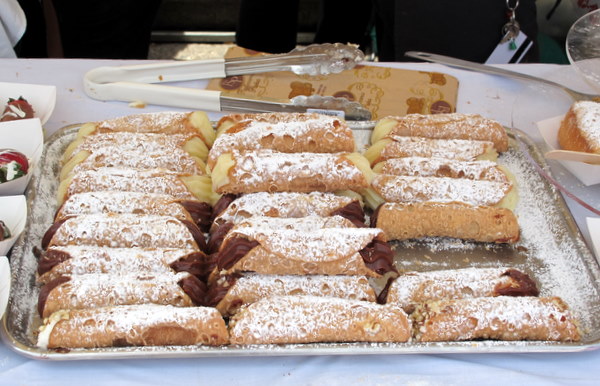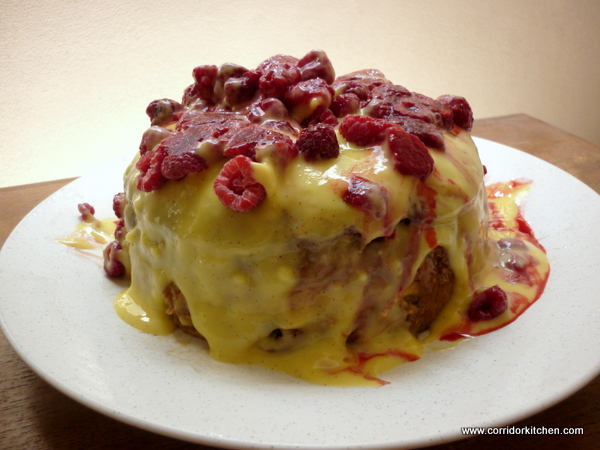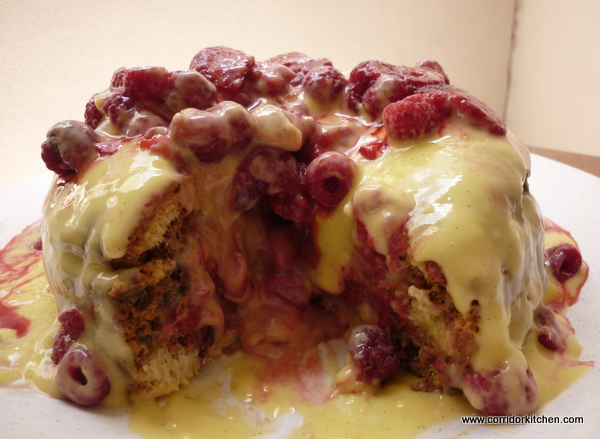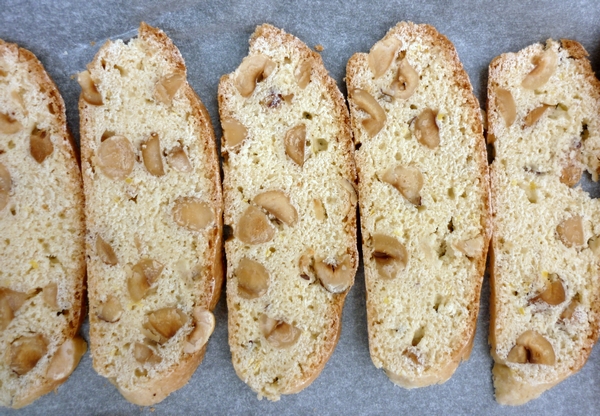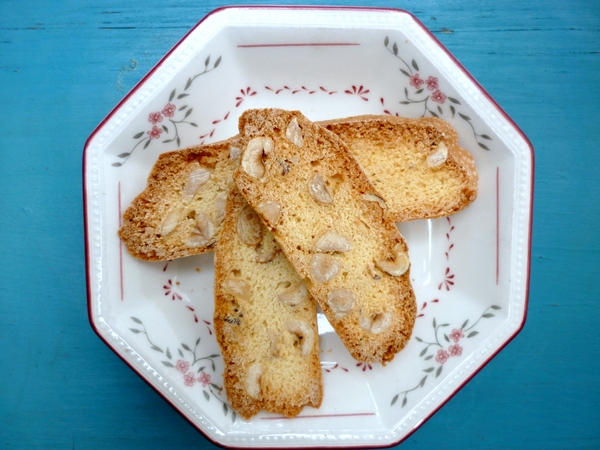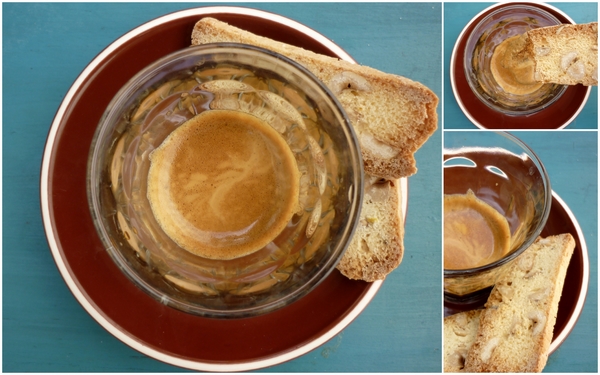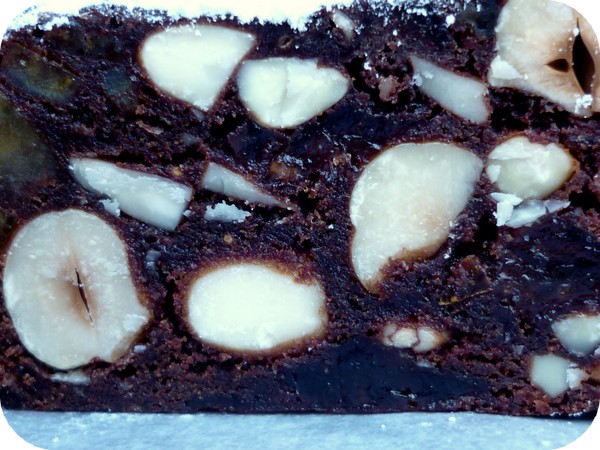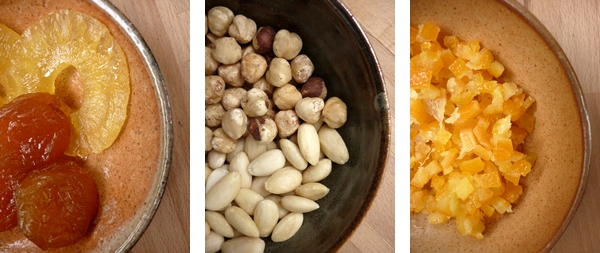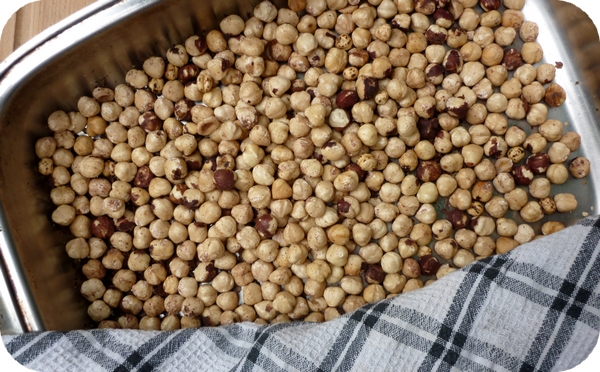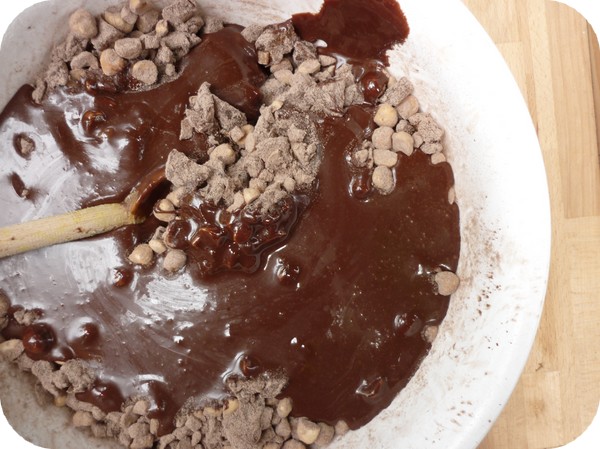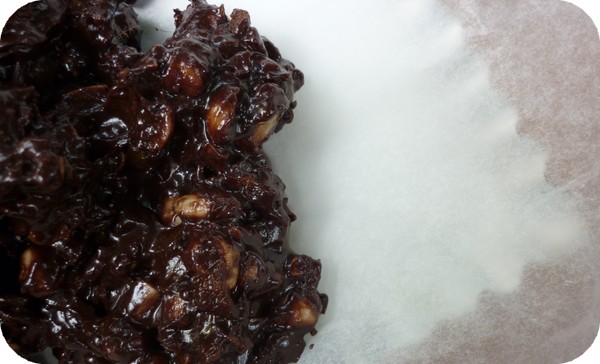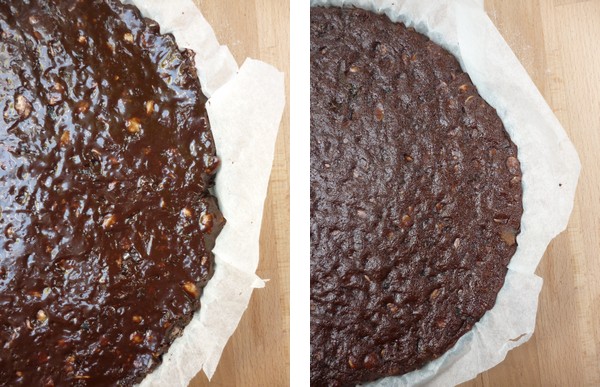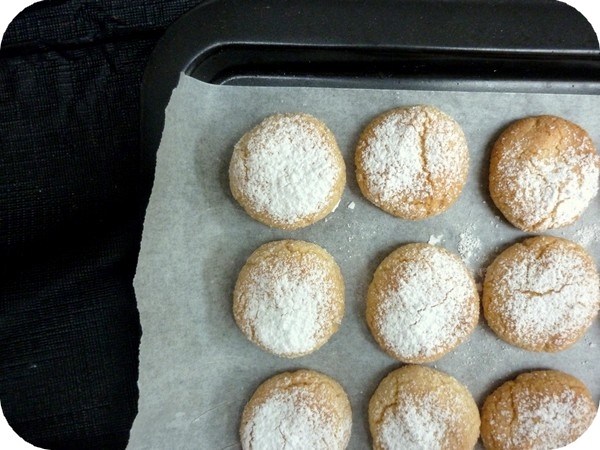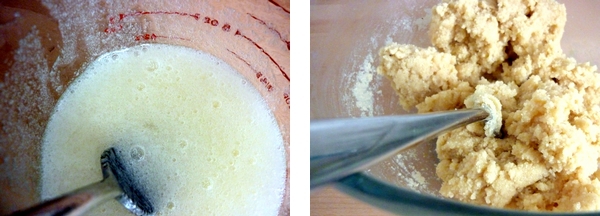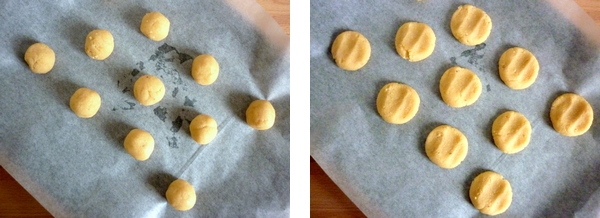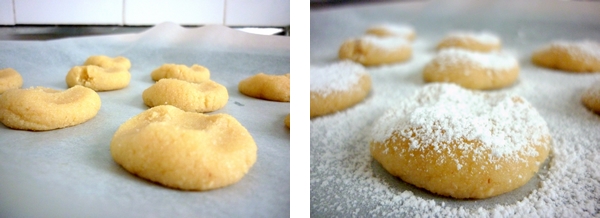In case you were wondering, I have decidedly unexotic and Catholic heritage- generic Irish/English stock on my Dad’s side and on my Mum’s side, half Northern Italian and half more of the same. I am, as they say, an anglo mongrel, and the food I grew up on reflects that fact. I am sometimes accused, mostly jokingly but with a dash of truth thrown in, of growing up ‘without culture’ by my partner, his heritage being a mix of Portuguese and Iraqi Jew now considered exotic.
In a way, I think as Australians we shortchange ourselves when we say we have ‘no culture’. We have every culture, that’s the point, and we can serve it all up on a plate and pretend for five minutes that we are all friends. It solves nothing, but it feeds everyone. And there are things that I think all of us who love food understand. Many of the conversations we had growing up centred on food. What did you have for lunch, what should we have for dinner, have you eaten? These are universal questions for perpetually hungry and food-obsessed families, whatever their nationality.
Food for me is mostly all about my mother. It is the same for my partner, on the phone to his mum trying to suss out exactly the right methods or ingredients to get that thing she made for him as a kid just the way she made it. If we cook something our parents used to make, and try to make it the way they would when we were kids, it is kind of ritual, a kind of homage. Whether that thing be a sausage sanger or a perfectly rendered matzo ball, we can chow down on each with equal gusto.
This recipe is basically eggplant parma, a combination of a traditional eggplant fritter recipe from my Grandfather’s family and the tomato sauce that we would eat in some form at least once a week when I was growing up. I would happily subsist on slow-cooked tinned tomatoes for the rest of my life, and this is one mind-numbingly delicious way of serving it.
Eggplant Parmigiana
Serves 8 generously, if served with salads and sides.
2 enormous eggplants, cut into ½ centimetre slices
1 egg, lightly beaten
1 cup flour
1 stale baguette, blended in the food processor
olive oil, for shallow frying
Extra virgin olive oil
2 small onions, finely chopped
pinch chilli flakes
pinch salt
6-8 cloves garlic, finely chopped
4x 400g tins chopped tomatos
1/2 cup red wine
2 sprigs rosemary (optional)
500g mozzarella, sliced
150g good quality parmesan or romano cheese, grated
Tip: You can either make the sauce first or take the ‘do everything at once approach’ outlined below, just keep in mind that the sauce should cook for at least an hour. The whole dish can be made a few days in advance; once everything is layered together, refrigerate and when you want to serve it, bring it up to room temperature before cooking.
Salt the eggplant slices well, layer on a plate and place a heavy object on top. Arrange three bowls on the bench, 1 with the flour, 1 with the beaten egg, and 1 with the breadcrumbs. Leave the weighted eggplant slices to sit for 20 minutes.
Heat the oil in a large pan. Cook the onions until translucent, then add the salt, chilli flakes and garlic. Cook until all ingredients are done but not brown. Add the wine to deglaze the pan, cook a couple of minutes. Add the tomatoes, give the tomato tins a bit of a rinse and pour the resulting water in too. Simmer the sauce for 45 minutes – 11/2 hours, adding in the rosemary about halfway through.
While the sauce is simmering, rinse the eggplants and pat dry. Heat the oil in a large frying pan to shallow fry the eggplant. Then it is just a matter of dipping each eggplant slice in flour, then egg, the breadcrumbs and popping them into the oil. Turn each slice over so it browns on both sides, and when done, put the slices on a plate lined with paper towel to drain well. This process takes about the same amount of time as simmering the sauce.
Remove the rosemary from the sauce, give the mixture a quick blitz with a stick blender if too lumpy, and leave to cool.
Preheat the oven to 180 degrees C. In a large baking dish, layer the sauce, then the eggplant slices, then the mozzarella and then the parmesan romano until the dish is full or the ingredients are exhausted – whichever comes first. Bake for around 45 minutes or until the top is browned.
Do you have a favourite family recipe?
Sydney food bloggers suffer from the paradox of choice. We are presented with so many food choices, trends and fads that sometimes we become paralysed. We can’t decide what to have for dinner. It’s a hard life.
Last weekend, having just finished up The $35 Challenge where there was very little in the way of food choice, I was far from paralysed by this paradox. In fact, I was salivating, and not even necessarily at the variety of food offered up by the harbour city, but at the very concept of choice itself. Now. What to eat first?
I knew exactly where my first foray back into foodie-ville would take me. A week or so ago, after a tip-off from kindred blogger Inner West Foodie, I got an email from Ashfield council inviting me to its three upcoming festivals: Ashfield’s Tastes of Asia (Friday night), Haberfield’s Primavera (Saturday) and The Summer Hill Grand Food Bazaar (Sunday), all part of the Crave Sydney Food Festival. Friday I was still on The $35 Challenge and Sunday the inner-west trains weren’t running so I knew I’d be at Haberfield come Saturday. It was to be my only Crave Sydney Food Festival event, and one I’m glad I didn’t miss. Haberfield isn’t a suburb I’ve spent much time in, so I welcomed the chance for a bit of exploration. And with Ashfield Council promising 100% local stallholders (specifically, no gozlëme) I was hooked.
These days, no matter how awesome the food festival, there are always your usual suspects. I’ve written about it before, but there’s your tapas stall, your gozlëme, your poffitjes. You’ll find them at the night noodle markets, at the Campsie Food Festival and the Glebe Markets. Ok, there’s a reason they’re so ubiquitous – they’re solid crowd pleasers. But I think that markets and festivals have a brief, a theme, and I think they should stick to that brief. If the theme is noodles, there should be noodles. If the theme is, say, a suburb, the festival should be made up of businesses from that suburb or at least that area. If the theme is a country or region, there should only be stalls serving food from that region.
I applaud Ashfield Council for sticking to its own brief. Haberfield’s Primavera was made up entirely of businesses from Haberfield – in fact, I think it was made up entirely of businesses from the Ramsay and Dalhousie streets. It is quite a small festival, so maybe that will change as it garners more interest. But I hope not. Aside from The National Multicultural Festival earlier this year, it’s one of the only food festivals I’ve been to that has truly stuck to its own brief.
When I arrived, there wasn’t much to see. Ramsay and Dalhousie streets were blocked off with a caravan stage in the middle of the crossroads with everything quite spread out. This is because the stalls were located directly in front of businesses, which I thought was a fantastic idea. It meant that the stallholders could cook in their own kitchen if they wanted and punters would easily be able to return for a meal sometime if they liked what they tasted.
The point of Haberfield’s Primavera is to showcase the flavours of the local area. To this end, everything served was in very small portions, with nothing costing more than $5. This made it not only affordable, but (my favourite part) it meant that you could try many different dishes without feeling like a huge, ridiculous whale at the end of it. For the businesses involved, it also ensured the maximum number of customers would get to taste their food. It’s impossible to object to eating a small $4 treat sitting in the gutter on a beautiful spring day, let alone several treats. Thus, Haberfield Primavera managed to circumvent the much uttered criticism of ‘But I could pay $15 to eat that in a restaurant! Why would I pay that to sit in a park/on the ground/standing in the street?!’
And I ate so many things. I started with fried zucchini flowers stuffed with cheese and anchovy from Haberfield Post. They probably needed to drain and cool a bit, I got way too excited and ate mine fast. I’d brought my (vego) mum along to take photos and she said ‘Oh…I think that had and anchovy in it.’ Damn, Italy, always with the secret fish. Ah, well.
At the Zanetti 5 Star Delicatessen they had free samples of olives, salami and cheese. We tried the Sicilian green olives marinated in lemon and garlic and vowed to go back and buy a tub. Out the front of the iconic Lamonica IGA where an old man played the piano accordian I grabbed a $1.50 espresso which was heavy on the crema but also on the bitterness. Ah, well. You get what you pay for, I guess.
At La Pasteria they were selling two things: meat lasagne and spinach and ricotta cannelloni. I grabbed a lasagne, it was pretty greasy but in a guilty pleasure kind of way, super rich, cheesy and tomato-y. At the same time, the flavours were very simple; just folds of pasta and cheesy Bolognese. Heaven.
I lost track of how much time we spent staring at and photographing the gorgeous Italian pastries, cakes and savouries at the Pasticceria Papa stall. They had cannoli, their famous ricotta cake (which I vow to try next time), gorgeous looking thin squares of pizza, arancini the size of which I’d never seen before, sandwiches, biscuits and god knows what else. As there were still more salty snacks to try, we decided either to return at the end or, if not, to join the ever-lengthening queue for gelato at an as-yet-unopened gelataria.
We considered tasting some wine at Haberfield Cellars, but found ourselves drifting straight past to the stall at La Disfida. This stall would definitely win the award for the most varied and interesting looking food, it’s was actually really hard to decide what to eat; there was amazing looking orecchiette, eggplant involtini, Panuzzi, arancini with mushroom, rocket and truffle, peperoni pizza, and, something I wish I’d had room for, Italian doughnuts. We opted to share a slice of margherita pizza, cheeseless but to die for. The tomato was rich and balanced, the crust perfectly cooked, with just enough herbs and olive oil to finish it off.
Next up was the Paesanella Cheese Shop which makes its own cheeses. They were selling three kinds of bruscheta; fresco and rocket, buffalo caprese, and a blue cheese and marscapone mix. They were also selling bocconcini ‘lollipops’ wrapped in prosciutto. The stall was such a simple idea but it was so effective in showing off Paesanella’s range of freshly-made cheeses. We grabbed a fresco and a caprese to share, the fresco was pan fried and salty with fresh crusty bread, offset by the peppery rocket and a dash of vinegar, while the buffalo mozzarella had a fresh, clean but still salty flavour. The tomatoes used were perfectly ripe.
We finished things off with a ricotta canolli from the aforementioned Pasticceria Papa. It had an amazing crunch to it was disappointingly bland in flavour. Sicilian olives in hand we headed for home, satisfyingly filled and pretty impressed at what Haberfield Primavera had to offer. I will definitely return next year.
When it comes to food, do you suffer from the paradox of choice?
I know I can’t be tho only one whos’ kitchen experiments sometimes turn out…questionable. Or is it questionably? Whichever is grammatically correct. Anyway, we’ve all had moments where we’re sure the lightning bolt of genius has his us. ‘Mustard éclairs!’ we shout ‘Twice-baked rum-soaked polenta!’ ‘Chocolate steak!’. But, by and large, it is disaster, not genius that has struck.
Personally, my mistakes aren’t usually to do with creativity. I’m not much for crazy fusion projects (Italian sushi, anyone?). Rather, my disasters are the fruit of my impatience. I will drop or undercook or burn myself on things in my haste to prepare food quickly. I’m never going to make a mustard éclair, but I cook the same way I eat…fast. And as a result, sometimes my creations can resemble a kind of indigestion.
I have been putting off posting this recipe because for this very reason; I’m just not sure about it. Something about it just isn’t quite right. It isn’t terrible. It does work, in theory. It tastes ok. It’s good on paper. Nobody died. But I’m not convinced by it.
Maybe it’s because I love panettone, buttered and dunked in coffee so much that it seems a bit redundant, like bread and butter pudding made with croissants – as if there’s any such thing as a leftover or stale croissant. Maybe it’s just not as good as the sum of its parts – all the components are delicious, so you’d expect the finished product to be even more so, but it isn’t. Maybe you can tell my what’s missing, or maybe you can fix it. Either way, here it is: Panettone Trifle.
Raspberry Upside-down Panettone Trifle
1 Panettone, sliced into thick rounds (as you would a layer cake, I’d imagine)
About 400g frozen raspberries
1 portion Portuguese custard or any other custard you like
About 300ml fresh coffee, cooled and in a flat dish
Find a container roughly the same size as or a bit smaller than the panettone. Line it with cling wrap.
Dunk a round of panettone in the coffee, press into the container. Scatter a few raspberries and slather on some custard, repeat with all layers – you should have art least 1/3 of the custard left. Cover and refrigerate.
To serve, turn the trifle out onto a plate, cover in custard and sprinkle with raspberries. It will be a mess but maybe you will like it.
So, do you have any questionable kitchen experiments you’d like to share?
I’ve always had an interest in what people really eat and cook. Not what they say they eat, not what they blog but what they actually eat. The food media that gives me the most satisfaction is that which starts with this very obvious question- what do people eat? It’s why I adore shows like Food Safari and blogs like Smitten Kitchen and The Stone Soup, and also why one of my favourite people to follow on twitter is Pantry sniffer, who tweets entire recipes in 140 characters.
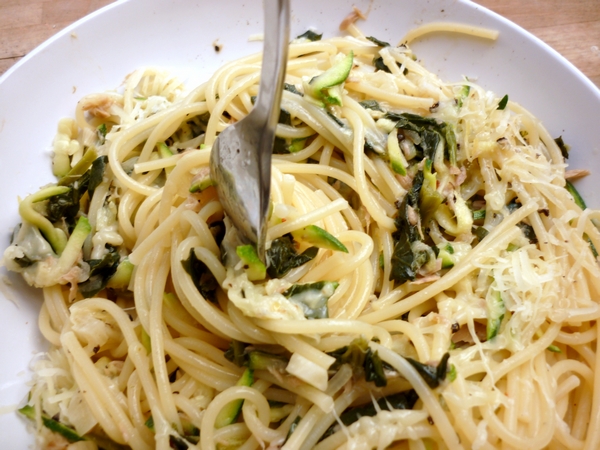
When I started Corridor Kitchen, I stressed that my photos wouldn’t be up to scratch, as my camera is a pretty basic point-and-shoot that doesn’t tend to focus properly. As a result I took hundreds of pictures of each dish. This, along with needing to photograph food in daylight hours meant I had to cook specifically to blog. In other words, I wasn’t blogging my actual daily eats, or even my once-a-week eats.

I’ve recently realised that this runs contrary to the whole ethos of Corridor Kitchen of common sense, cheap and practical food. Since I started blogging, my everyday cooking has become decidedly less creative, and I find our house filled with more baked goods than I’d care not to eat. I want to believe that the creative side of cooking, that intuitive what’s-in-the-fridge/pantry-and-what-can-I-make-from-it approach my mother taught me is blogworthy.
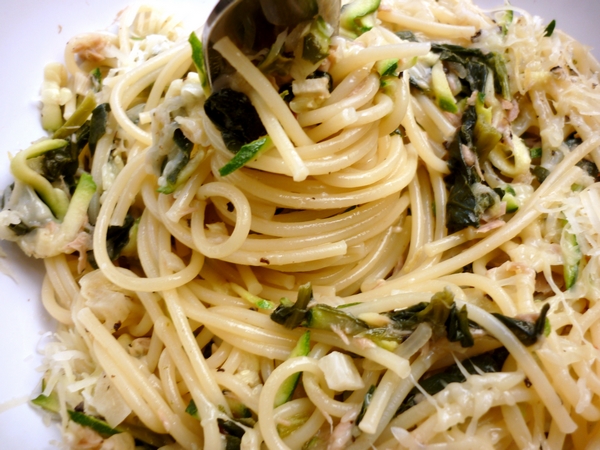
This dish is one I’ve made a lot lately, and something I’ve only ever cooked for myself. It’s made with things I always have on hand and is very flexible . I take my new-old favourite, spaghetti and coat it in a garlicky, lemony sauce with chunks of tuna, zucchini and spinach, sprinkling it with romano and freshly cracked black pepper. The building blocks are pasta, tuna or chicken, garlic, wine dregs, butter and oil, and a hard cheese with any green veggie you like.I always have frozen spinach on hand so I used that, and I had a zucchini this time around but I’ve used green beans, cabbage and even buk choy in the past.
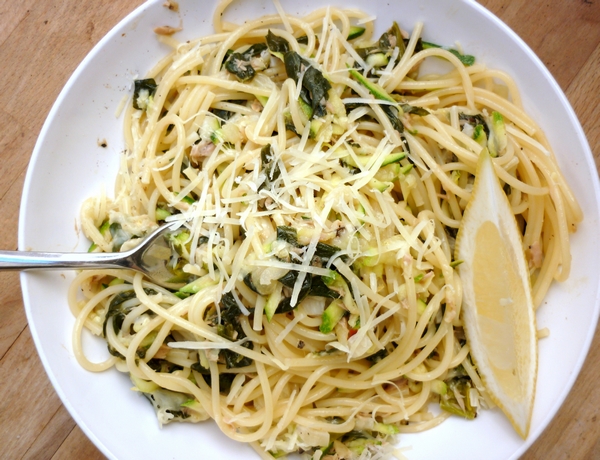
Lau’s Pantry Pasta
(serves 2)
Enough spaghetti for 2 people
A generous dollop of butter
A good slosh of olive oil
1 very small onion, diced
Pinch salt
6 cloves garlic (so about twice as much garlic as onion), finely chopped
Pinch chilli flakes
The zest of half a lemon
1 individual 95g tin of tuna – I used a lemon pepper flavoured one but you can use any kind.
1/2 cup white wine dregs
1 zucchini, grated
80g frozen spinach, defrosted (microwave 1 minute on high)
The juice of half a lemon
Romano and freshly ground pepper, to taste
Put the pasta on to boil as per the packet instructions. I turn the stove up full blast, boil a jug, pour the water into the pan and once it boils, and add salt. When it comes to the boil again, I snap the spaghetti in half and cook for 8 minutes.
Meanwhile, heat the butter and oil in a medium frypan. Add the onion and stir. Once translucent, add the garlic, chilli flakes, salt and lemon zest.
Once this is cooked, add the tuna, a ladleful of the boiling pasta water, the wine and the spinach. Cook a few minutes. Add the zucchini and cook a couple of minutes until soft.
Once cooked, add the drained pasta and some pepper and salt. Stir through while still on the heat. Serve with plenty of romano and freshly cracked black pepper.
What’s your favourite home alone dish?
Biscotti is one of those treats that I can’t get enough of but I always forget how time consuming it is. I’ll walk past a packet of biscotti in a supermarket or a deli and think to myself ‘Six dollars a packet? That’s ridiculous!’ I’m frugal by nature but also quite lazy, so every few years I’ll bake up a batch. And that’s when I remember what a pain in the arse baking can be.
The word biscotti comes from the latin for ‘twice baked’ and this is the time consuming part. After mixing up a dough, forming it into two logs and baking them for nearly an hour, the logs are thinly sliced and then each slice needs to be dried out in the oven.
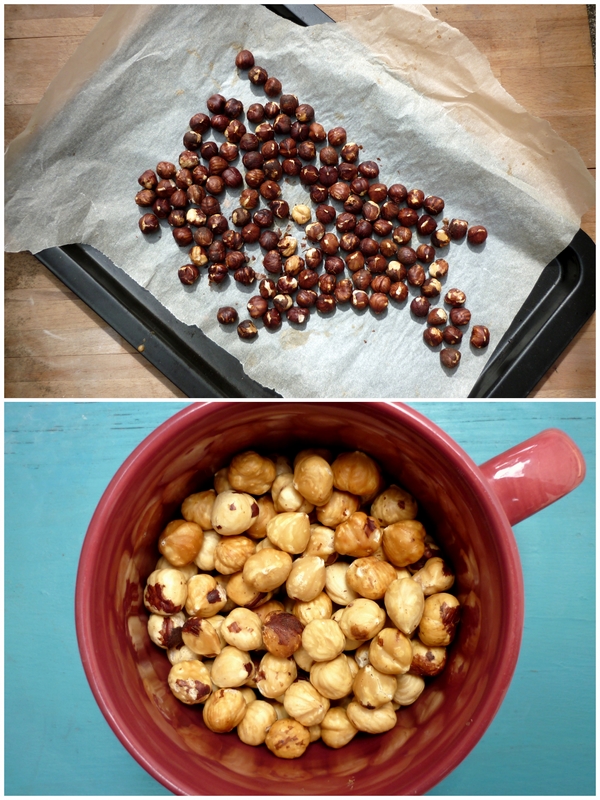 Biscotti are slender brittle fingers of biscuit with chunks of nuts in them, perfect to dunk in coffee. They are crunchy and addictive with a slight egg taste as the dough is made with eggs, flour and sugar (no milk or butter). Although time consuming, this recipe makes a large batch. If you slice them finely, you will get around one hundred biscotti.
Biscotti are slender brittle fingers of biscuit with chunks of nuts in them, perfect to dunk in coffee. They are crunchy and addictive with a slight egg taste as the dough is made with eggs, flour and sugar (no milk or butter). Although time consuming, this recipe makes a large batch. If you slice them finely, you will get around one hundred biscotti.
This recipe has been in my recipe folder for ages, so I assume that like most of my baking recipes from my teenage years its from an Australian Women’s Weekly cookbook. Unfortunately I can’t remember the specific cookbook. The original recipe had a cup of hazelnuts, my additions were chocolate and lemon zest, making half the biscotti hazelnut chocolate and the other half hazelnut and lemon. I also roasted the hazelnuts to intensify the flavour and make the skins easier to remove, making them less bitter.
Hazelnut Biscotti two ways (adapted from AWW)
3 eggs
1 cup caster sugar
1 tsp vanilla extract
2½ cups plain flour
½ cup self raising flour
1½ cups hazelnuts (that’s about how much was in the packet I bought)
½ cup chocolate slivers (I chopped some 50% cocoa lindt as its nice and thin and not too dark)
The zest of half a lemon
In a hot oven roast the hazelnuts for about 15 minutes or until fragrant and brown. Leave to cool for half an hour. As the nuts cool they will shrink slightly and their skins will become loose. When cool, rub the skins off with a tea towel.
Turn the oven down to 160°c. Whisk sugar, eggs and vanilla essence together in a large bowl. Stir in flours to a sticky dough.
Divide the dough and put half in another bowl. Add 1 cup of roasted hazelnuts and the lemon zest to one bowl and ½ cup roasted hazelnuts and half a cup of chocolate shards in the other bowl. Mix in the chunks and form the dough into two logs, one of each flavour. Place on a paper-lined baking tray and bake for 45 minutes.
Allow to cool until just warm, slice thinly into 90-100 pieces. Spread the slices on baking trays and bake for 5-10 minutes each until dried out. Cool and serve.
It’s no secret that Christmas is all about eating, and not just the day of. People often make (or buy) and give treats as gifts, anything from shortbread to jam; rich, wintery foods that will keep for months but when you think abou it, make little sense in the context of an Australian (summer) Christmas. Let’s face it, there are only so many chutneys and flavoured oils you can fit in your pantry. I never really understood why people would make food to give on the most food-laden day of the year. It’s certainly not something I could be bothered doing.
That said, I’m totally in favour of tasting the fruits of someone else’s labour, especially baked goods. Christmas baking is a tradition that many hold dear, including my friend Gina who spent her spare time this week baking fruit mince pies and the traditional Italian Christmas treat paneforte, kind of a distilled, nutty fruitcake.
I took great delight in photographing the ‘pan-for-day’ (as we say in a broad Aussie accent) and all its preparations. Neither Gina nor I could pronounce its name to the satisfaction of her Italian housemate, who took the piss out of us incessantly. That was fine by me. I was taking home a mini paneforte for lunch!
Gina had to ring her parents numerous times to get the correct recipe as although it was written down originally, it has undergone endless metamorphoses and adaptations to become what it is today. So this post is significant in that the recipe is finally written down. Next year Gina will have it on hand, and so will anyone else who wants to make it…
Paneforte is quite flexible. You can use any glacé fruit and any nuts you like, just make sure you have the right amounts. If you don’t feel like chopping nuts, you can leave them whole for an ‘extra chunky’ paneforte or pulse them (briefly) in the food processor. If you can only find dried fruit, not glacé you can use it but keep in mind the paneforte will be drier. Gina’s best tip? Buy peeled hazelnuts. Peeling hazelnuts is a pain in the arse. And the Aussie twist? Glacé pineapple.
The Tarantos’ Paneforte
125g peeled hazelnuts
125g blanched almonds
60g glacé apricot
60g glacé pineapple
60g chopped mixed peel
2/3 cup plain flour
2 Tablespoons cocoa powder
1 teaspoon cinnamon
60g dark chocolate, coarsely chopped
1/3 cup sugar
½ cup honey
Preheat oven to 160°c.
Roast the almonds and hazelnuts in a baking dish. Once cooled, coarsly chop the nuts, along with the glacé fruit.
Sift flour, cocoa and cinnamon together. Stir to combine. Stir nuts and fruit into dry ingredients.
Melt honey and sugar together on a low heat. Bring almost to the boil and simmer for 5 minutes or until thick and syrupy. Take off the heat, let cool for 5-10 minutes and then stir through chocolate until melted.
Pour wet ingredients into dry and stir until completely combined. This will take a lot of elbow grease!
Line a 20cm loose-bottomed round quiche tine with baking paper. This is essential – if you just grease the tin the paneforte is sure to stick. Dollop the mixture onto it and cover with a second sheet of baking paper. Press the mixture down to flatten it, right to the edges, to get rid of any air bubbles. Cut off excess paper.
Bake for around 35 minutes or until the paneforte has just lost its sheen. If you overcook it or even burn it, just leave it in an airtight container for a couple of days before serving. This will soften it. Lasts 3 months if not exposed to air.
What dish do you most look forward to at Christmas?
I have a friend, let’s call her Ms. G, who is in the habit of whipping up amazing and intricate dishes on a regular basis. I’m always excited to be invited round for dinner and luckily, she doesn’t live far and invitations are frequent. Ms. G is adept at homemade ice cream, paella, bread made from scratch, risottos…the list goes on. I’m amazed at her patience at skill and it’s serendipitous that she’s an expert in all those dishes I would never dare attempt.
In my own kitchen, my absolute favourite recipes are those that involve minimal effort but yield maximum results. This probably has as much to do with my lack of patience as it does pragmatism, but nothing gives me more pleasure than recipes that are zero fuss and yet somehow, absolutely stunning. It never continues to amaze me how many recipes pack a massive flavour punch with very few ingredients, very little effort and very little time.
Amaretti was one such happy surprise for me. I had always marvelled at their crisp outer shell and chewy centre, perfect with a ristretto or dunked in a cappuccino. Surely, I thought, they must be fiddly and time consuming to taste this good, something like macarons. And yet these little Italian biscuits were as forgettable as they were delicious; in fact it wasn’t until about a year ago that I looked online for a recipe. I ended up selling some to a cafe for a while but due to their understated appearance, that didn’t last long.
This is one of the easiest and fastest biscuit recipes you will ever make in your life- all you do is whisk a few ingredients together with a fork, roll the mix into balls and bake. Enjoy!
Stellar Amaretti
200g almond meal
¾ cup caster sugar
2 egg whites
¼ teaspoon almond essence
Icing sugar, for dusting
Preheat oven to 175◦c. Line two biscuit trays with baking paper.
Beat sugar, almond essence and egg whites together with a fork until smooth. Stir in almond meal with fork.
With dampish hands, roll small amounts of the mixture into balls of 2-3 cm in diameter and place on trays. I usually fit about 11 per tray. Flatten them with your fingers and dust liberally with icing sugar.
Bake for around 12 minutes. They should not be brown, just starting to get a touch of colour on them. Cool for one hour before serving and/or storing in an airtight container.
Makes 25 amaretti, which will keep for up to 2 months. Makes a great Christmas gift!
So, readers, do you have a favourite no-fuss treat?
About me
 Sharing easy recipes, hunting down the best coffee. Honest accounts, nothing too serious. Read more...
Sharing easy recipes, hunting down the best coffee. Honest accounts, nothing too serious. Read more...Recent Posts
- Aerpress means no more shit #travelcoffee and #workcoffee
- Why I write and four ace bloggers who do it better
- The five best things I ate in London
- Shoreditch is awesome, airports are not
- I quit sugar? Do I bollocks.
- Cubao Street Food, Alexandria
- The Reformatory Caffeine Lab, Surry Hills
- Brewtown Newtown
- Stay caffeinated over Christmas
- Gumption by Coffee Alchemy, Sydney CBD
Popular posts this month…
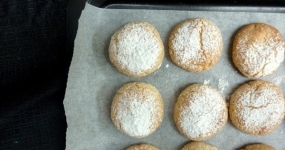 Amaretti – The no-fuss treat posted on November 18, 2010
Amaretti – The no-fuss treat posted on November 18, 2010 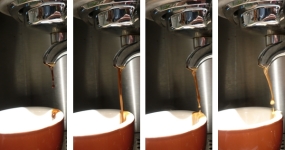 5 tips for perfect espresso posted on November 23, 2010
5 tips for perfect espresso posted on November 23, 2010  Boysenberry Banana Sorbet posted on November 26, 2010
Boysenberry Banana Sorbet posted on November 26, 2010 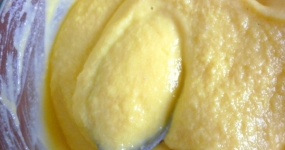 Rich Portuguese Custard posted on November 29, 2010
Rich Portuguese Custard posted on November 29, 2010 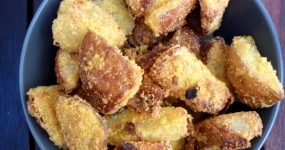 Desert Island Potatos posted on December 3, 2010
Desert Island Potatos posted on December 3, 2010 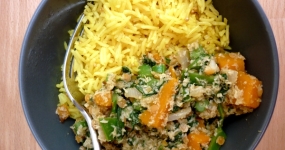 Sri Lankan Spinach with Coconut posted on December 10, 2010
Sri Lankan Spinach with Coconut posted on December 10, 2010 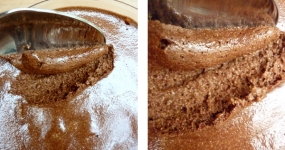 Mousse Chocolate and other peoples’ families posted on December 15, 2010
Mousse Chocolate and other peoples’ families posted on December 15, 2010 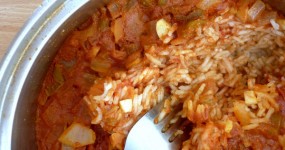 The quest for Mex part 1 – Mexican Red Rice posted on December 17, 2010
The quest for Mex part 1 – Mexican Red Rice posted on December 17, 2010
Disclaimer:
All opinions in this blog are mine, an everyday, real-life person. I do not accept payment for reviews and nor do I write sponsored posts. I do not endorse the content of the comments herein.

